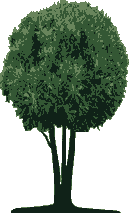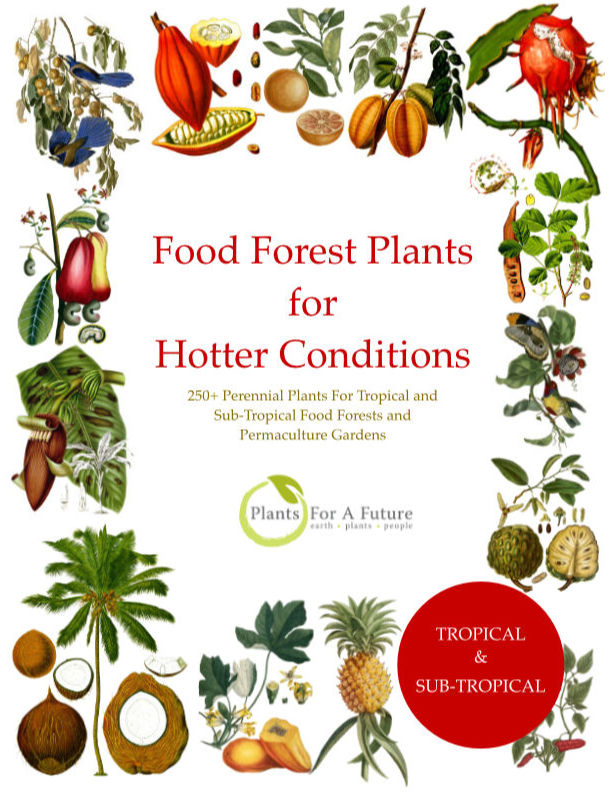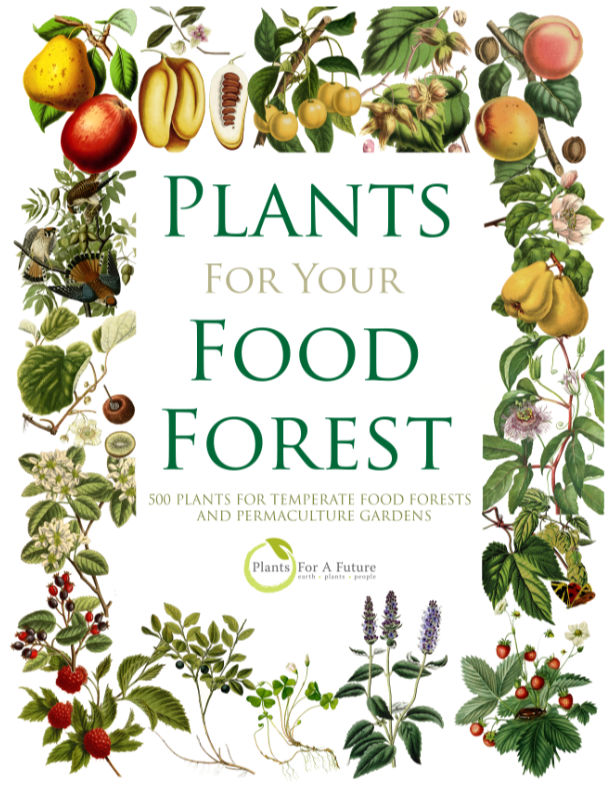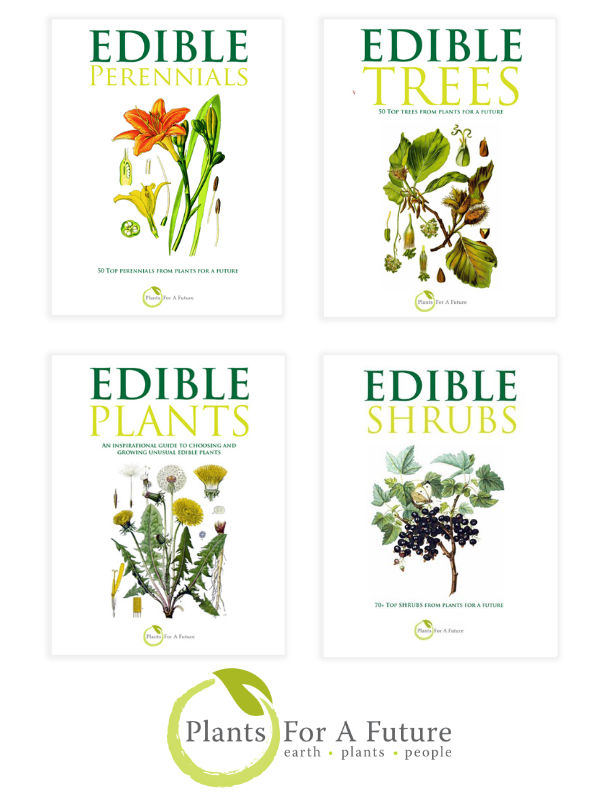Translate this page:
Summary
Sorbus aucuparia, commonly known as Rowan or European Mountain Ash, produces small, acidic fruits that can be eaten raw or cooked, though large quantities may cause stomach upsets. The fruit is commonly used in jams, preserves, or dried and mixed with flour, while roasted seeds may serve as a coffee substitute. Leaves and flowers can be used as a tea alternative, though young leaves contain cyanogenic glycosides and are considered a famine food. The tree thrives in a variety of soils, including heavy clay, chalk, and acidic peat, preferring cool, moist conditions but tolerating some shade, though it fruits better in full sun. Highly wind-resistant, it withstands maritime exposure and atmospheric pollution, making it suitable for shelterbelt plantings. Fast-growing, particularly as a seedling, it responds well to coppicing but is susceptible to fireblight. Ecologically, it provides food and habitat for wildlife, attracting birds and supporting 28 insect species. Agroforestry benefits include its use as a shade tree and contribution to soil improvement. In landscaping, it is valued as a specimen tree with attractive flowers rich in nectar and pollen. Its wood, known for being hard, fine-grained, and elastic, is used in furniture making, barrel hoops, cogs, and woodturning. Additionally, the tree yields an oil from its seeds, a cosmetic face mask from its fruit, and a black dye from its branches and tannin-rich plant parts. Bloom Color: White. Main Bloom Time: Early spring, Late spring, Mid spring. Form: Oval, Upright or erect.
Physical Characteristics

 Sorbus aucuparia is a deciduous Tree growing to 15 m (49ft) by 7 m (23ft) at a medium rate.
Sorbus aucuparia is a deciduous Tree growing to 15 m (49ft) by 7 m (23ft) at a medium rate.
See above for USDA hardiness. It is hardy to UK zone 2 and is not frost tender. It is in flower from May to June, and the seeds ripen from August to September. The species is hermaphrodite (has both male and female organs) and is pollinated by Insects. The plant is self-fertile.
It is noted for attracting wildlife.
Suitable for: light (sandy), medium (loamy) and heavy (clay) soils, prefers well-drained soil and can grow in heavy clay soil. Suitable pH: mildly acid, neutral and basic (mildly alkaline) soils and can grow in very acid and very alkaline soils.
It can grow in semi-shade (light woodland) or no shade. It prefers moist soil. The plant can tolerate maritime exposure.
It can tolerate atmospheric pollution.
UK Hardiness Map
US Hardiness Map
Synonyms
Pyrus aucuparia
Plant Habitats
Woodland Garden Canopy;
Edible Uses
Edible Parts: Fruit Leaves Oil
Edible Uses: Coffee Oil Tea
Fruit - raw or cooked[2, 3, 5, 7, 9]. The fruit is very acid and large quantities of the raw fruit can cause stomach upsets[10, 13]. It can be used to make delicious, if slightly acidulous, jams and preserves[7], the fruit can also be dried and used as a flour mixed with cereals[2, 66]. The fruit is about 7.5mm in diameter[200] and is produced in quite large bunches making harvest easy[K]. The leaves and flowers are used as a tea substitute[61, 183]. Young leaves are said to be a famine food but they contain a cyanogenic glycoside so you should be very hungry before even thinking of eating them[179]. A coffee substitute[183]. The report was referring to the fruit, it probably means the roasted seed.
References More on Edible Uses
Medicinal Uses
Plants For A Future can not take any responsibility for any adverse effects from the use of plants. Always seek advice from a professional before using a plant medicinally.
Antirheumatic Antiscorbutic Aperient Astringent Diuretic Hypoglycaemic Laxative Vitamin C
The bark is astringent, it is used in the treatment of diarrhoea and as a vaginal injection for leucorrhoea etc[4]. The fruit is antiscorbutic and astringent[4, 7]. It is normally used as a jam or an infusion to treat diarrhoea and haemorrhoids[254]. An infusion can also be used as a gargle for sore throats and as a wash to treat haemorrhoids and excessive vaginal discharge[254]. The seeds contain cyanogenic glycosides which, in reaction with water, produce the extremely toxic prussic acid[254]. In small quantities this acts as a stimulant to the respiratory system but in larger doses can cause respiratory failure and death[K]. It is therefore best to remove the seeds when using the fruit medicinally or as a food[254]. Both the flowers and the fruit are aperient, mildly diuretic, laxative and emmenagogue[9, 13, 21]. An infusion is used in the treatment of painful menstruation, constipation and kidney disorders[9].
References More on Medicinal Uses
The Bookshop: Edible Plant Books
Our Latest books on Perennial Plants For Food Forests and Permaculture Gardens in paperback or digital formats.

Edible Tropical Plants
Food Forest Plants for Hotter Conditions: 250+ Plants For Tropical Food Forests & Permaculture Gardens.
More

Edible Temperate Plants
Plants for Your Food Forest: 500 Plants for Temperate Food Forests & Permaculture Gardens.
More

More Books
PFAF have eight books available in paperback and digital formats. Browse the shop for more information.
Shop Now
Other Uses
Cosmetic Dye Oil Shelterbelt Tannin Wood
Agroforestry uses: Sorbus species can be used as shade trees and benefit wildlife, providing food and habitat. The fruits are edible for birds and can be used in jams and jellies. They can also contribute to soil improvement. Landscape Uses: Specimen. An oil is obtained from the seed[13]. A cosmetic face-mask is made from the fruit and is used to combat wrinkled skin[7]. A black dye is obtained from the young branches[74]. All parts of the plant contain tannin and can be used as a black dye[4]. Trees are very wind resistant and can be used in shelterbelt plantings[11, 200]. Wood - hard, fine grained, compact and elastic. Wood turners highly recommend it, and it is also used to make hoops for barrels, cogs and furniture[7, 13, 61, 74, 113]. 1. Nectary - Flowers rich in nectar and pollen:
Yes – Sorbus species produce clusters of small, white flowers that are rich in nectar and pollen, attracting bees, butterflies, and other pollinators.
2. Wildlife - Food (Fruit, Seeds, Leaf litter, Shelter, Nesting, Roosting):
Yes – The fruit (berries) of Sorbus species, such as rowan or mountain ash, are eaten by birds and mammals. The dense canopy provides shelter and roosting opportunities for birds, while the fallen leaves contribute to the detritus layer for invertebrates.
3. Invertebrate Shelter (Overwintering sites, Leaf litter, Groundcover):
Yes – The rough bark, leaf litter, and berry detritus provide overwintering sites for invertebrates and beneficial insects. The fallen leaves can serve as ground cover, benefiting the ecosystem.
4. Pest Confuser (Smell):
No – Sorbus species do not have a notable scent that acts as a pest confuser.
Special Uses
Attracts Wildlife Food Forest
References More on Other Uses
Cultivation details
Succeeds in most reasonably good soils in an open sunny position[11]. Grows well in heavy clay soils. Tolerates some shade[186], though it fruits better in a sunny position[K]. Prefers a cool moist position and a lighter neutral to slightly acid soil[11, 13, 200]. Dislikes shallow soils or drought[11, 200]. Succeeds on chalk or acid peats[98, 186]. A very wind firm tree tolerating very exposed and maritime positions[186, 200]. Tolerates atmospheric pollution[200]. Some named varieties have been developed for their improved fruits which are larger and sweeter than the type[183]. Plants, and especially young seedlings, are quite fast growing[186]. The fruit is very attractive to birds. 28 species of insects are associated with this tree[186]. Responds well to coppicing[186]. Plants are susceptible to fireblight[188]. Special Features:Not North American native, Attractive flowers or blooms. The plant is heat tolerant in zones 7 through 1. (Plant Hardiness Zones show how well plants withstand cold winter temperatures.
Plant Heat Zones show when plants would start suffering from the heat.
The Plant Heat Zone map is based on the number of "heat days" experienced in a given area where the temperature climbs to over 86 degrees F (30°C).
At this temperature, many plants begin to suffer physiological damage. Heat Zones range from 1 (no heat days) to 12 (210 or more heat days).
For example Heat Zone. 11-1 indicates that the plant is heat tolerant in zones 11 through 1.) For polyculture design as well as the above-ground architecture (form - tree, shrub, etc. and size shown above), information on the habit and root pattern is also useful and given here if available. The plant's growth habit is a standard with a non-suckering single trunk [1-2]. In garden design, as well as the above-ground architecture of a plant, root structure considerations help choose plants that work together for their optimal soil requirements, including nutrients and water. The root pattern is branching: a heart root, dividing from the crown into several primary roots going down and out [2-1]. The tree is monoecious, with male and female flowers on the same plant. The Rowan tree is self-fertile, meaning it can pollinate itself and produce fruit without needing another tree. The fruits are typically harvested in late summer to early autumn, from August to October (Northern Hemisphere), once they are fully ripe. Sorbus species usually flower in late spring to early summer, generally from May to June (Northern Hemisphere), producing clusters of white or pink flowers. Sorbus species are generally moderate to fast-growing, with some species reaching maturity in about 5 to 10 years, depending on species and growing conditions.
References Carbon Farming Information and Carbon Sequestration Information
Temperature Converter
Type a value in the Celsius field to convert the value to Fahrenheit:
Fahrenheit:
The PFAF Bookshop
Plants For A Future have a number of books available in paperback and digital form. Book titles include Edible Plants, Edible Perennials, Edible Trees,Edible Shrubs, Woodland Gardening, and Temperate Food Forest Plants. Our new book is Food Forest Plants For Hotter Conditions (Tropical and Sub-Tropical).
Shop Now
Plant Propagation
Seed - best sown as soon as it is ripe in a cold frame[78, 80]. If you have sufficient seed it can be sown in an outdoor seedbed[78, 80]. Stored seed germinates better if given 2 weeks warm then 14 - 16 weeks cold stratification[98], so sow it as early in the year as possible. Prick out the seedlings into individual pots when they are large enough to handle. Seedlings are very slow to put on top-growth for their first year or two[11], but they are busy building up a good root system. It is best to keep them in pots in a cold frame for their first winter and then plant them out into their permanent positions in late spring.
Other Names
If available other names are mentioned here
Native Range
TEMPERATE ASIA: Altay, Amur, Armenia, Azerbaijan, Buryatia, China, Chita, Ciscaucasia, Dagestan, Gansu Sheng, Gorno-Altay, Habarovskij kraj, Hebei Sheng, Heilongjiang Sheng, Irkutsk, Jilin Sheng, Kamcatskij kraj, Kemerovskaja oblast, Korea, Krasnoyarsk, Kurganskaja oblast, Liaoning Sheng, Mongolia (northeast), Nei Mongol Zizhiqu, Novosibirsk, Omsk, Primorye, Respublika, Russian Federation, Russian Federation, Russian Federation, Russian Federation-Ciscaucasia, Shaanxi Sheng, Shandong Sheng, Shanxi Sheng, Tomsk, Tyumen, Tyva, Yakutia-Sakha,Turkey. EUROPE: Denmark, Finland, United Kingdom, Ireland, Iceland, Norway, Sweden, Austria, Belgium, Switzerland, Czech Republic, Germany, Hungary, Netherlands, Poland, Slovakia, Russian Federation-European part, European part, Belarus, Russian Federation, Komi, Perm, Ukraine (incl. Krym), Albania, Bulgaria, Bosnia and Herzegovina, Greece, Croatia, Italy (incl. Sicily), North Macedonia, Montenegro, Romania, Serbia, Slovenia, Spain, France (incl. Corsica), Portugal, AFRICA: Portugal, Madeira Islands, .
Weed Potential
Right plant wrong place. We are currently updating this section.
Please note that a plant may be invasive in one area but may not in your area so it's worth checking.
Conservation Status
IUCN Red List of Threatened Plants Status :

Growth: S = slow M = medium F = fast. Soil: L = light (sandy) M = medium H = heavy (clay). pH: A = acid N = neutral B = basic (alkaline). Shade: F = full shade S = semi-shade N = no shade. Moisture: D = dry M = Moist We = wet Wa = water.
Now available:
Food Forest Plants for Mediterranean Conditions
350+ Perennial Plants For Mediterranean and Drier Food Forests and Permaculture Gardens.
[Paperback and eBook]
This is the third in Plants For A Future's series of plant guides for food forests tailored to
specific climate zones. Following volumes on temperate and tropical ecosystems, this book focuses
on species suited to Mediterranean conditions—regions with hot, dry summers and cool, wet winters,
often facing the added challenge of climate change.
Read More
Expert comment
Author
L.
Botanical References
1117200
Links / References
For a list of references used on this page please go here
Readers comment